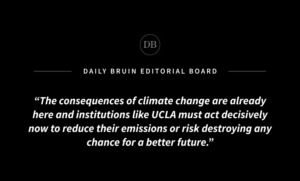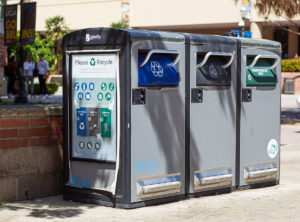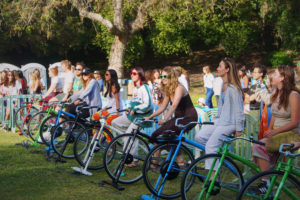For Bruins making travel plans, sustainability may be a factor worth considering.
The tourism industry – which accounts for 5% of total global carbon dioxide emissions – contributes to global warming, as well as the destruction of natural environments and communities, according to the Nature Journal. The implementation of various sustainable practices into travel plans can help combat such harmful effects.
Narayan Gopinathan, an Institute of the Environment and Sustainability doctoral candidate at UCLA, said transportation systems cause harm to natural landscapes and wild animals.
“In California and the U.S. as a whole, transportation is the biggest source of carbon emissions, and there’s all sorts of other impacts that transportation systems have on our planet,” Gopinathan said.
For example, Los Angeles is home to the eighth-busiest airport in the world, with around 75 million travelers in 2023, according to a LA World Airports report. According to U.S. News, Los Angeles International Airport was the third-highest producer of carbon emissions out of airports globally in 2019.
Despite its large carbon footprint, air travel may be the only practical mode of transportation for students who are not local to LA. Gopinathan said there are still ways to minimize the impact of traveling by plane.
“Travel nonstop if it’s under 3,000 miles,” Gopinathan said. “If it’s a really long trip … having a few stops is more fuel-efficient because the plane actually has to carry the extra fuel.”
For local transportation, sustainable practices include using public transportation or avoiding diesel-fueled vehicles. Although using public transportation can minimize one’s carbon footprint, the benefits may significantly diminish for longer commutes, especially in areas such as LA. Felisha Wong, an ecology and evolutionary biology instructional laboratory manager, said due to traffic and designated bus routes, her commute to work would be a five hour bus ride compared to an hourlong commute by car. Electric vehicles and bicycles may also be sustainable alternatives to using combustion-powered cars to explore local areas, Gopinathan and Wong added.
While transportation is an important consideration, Bruins can also practice sustainability while selecting travel locations. Alison Lipman, an ecology and evolutionary biology continuing lecturer and co-founder of the environmental conservation nonprofit SELVA International, said traveling locally helps minimize an individual’s carbon footprint.
“If you want to escape from the city, in LA, we’re surrounded by so many natural areas that most people who live here have never even explored,” Lipman said.
Other than traveling locally, Katherine Hernandez, a doctoral candidate in the IOES, said choosing vacation spots that are less tourist-heavy and populated helps to prevent overtourism, a phenomenon describing an excessive number of tourists burdening the local environment.
For example, overtourism has led to reefs in Hawaii being physically damaged by tourists who have broken them by touching, sitting or walking on them, according to Forbes. Chemicals from sunscreen worn by tourists, wastewater from hotels and polluted runoff from airports can also contribute to the degradation of reefs, according to the nonprofit environmental law organization Earthjustice. Hernandez added that birdwatching and backpacking trips can be unique itineraries to prevent the overcrowding of popular tourist attractions.
Additionally, overcrowding can disrupt the lives of local residents. According to CNN, an increased number of tourists in certain locations have encouraged landlords to offer short-term leases through online rental marketplaces AirBnB and Vrbo, resulting in housing shortages and price increases. Cities such as Irvine have enforced restrictions on short-term leases to prevent landlords from evicting local renters to supply more housing options for tourists who are often willing to pay more.
Instead of residential rentals, Wong added that travelers should look for green-certified hotels, which indicate compliance with established sustainability standards.
Cultural insensitivity is another way tourists can damage a local environment. Lipman said students should be wary of going on guided tours that involve interacting with wildlife, as such activities may disturb natural habitats and threaten the animals’ safety. Instead, Lipman added that tours led by local companies or communities can be a healthier alternative.
“In Africa, like the Maasai, there’s many projects where you can book a tour directly with the local groups, local indigenous groups,” Lipman said. “Ninety percent of your money is going to that community, and that community is managing the project.”
While the most eco-friendly travel option may not be the most practical or affordable for college students, Wong said the awareness and effort to implement sustainable choices can make a difference.
“It might not work for everybody simply because of where they’re at financially, and that should be also OK,” Wong said. “But being mindful of it and working towards that – a more sustainable individual lifestyle – it’s still important.”






Comments are closed.